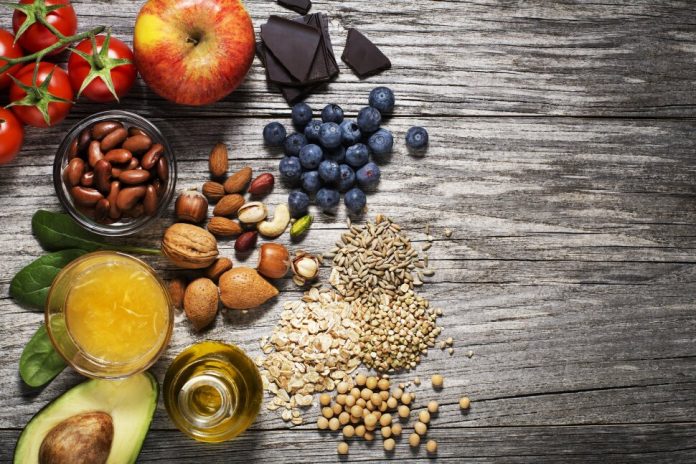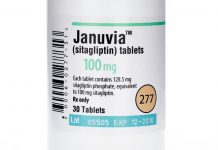Meal cookbooks are very useful for many people who are looking to save time and money. However, many cookbooks and meal preparation lessons do not meet the needs of people with diabetes.

(Getty Images)
Diabetes panel method
The diabetes plate method is a simple concept where you don’t need to count calories or carbohydrates on your plate. The method can be applied to any type of special diet or cultural cuisine. All you need to get started is an 8-inch dinner plate – smaller if you need fewer calories. You can use a 9-inch plate if you are very active and need a few extra calories.
There are five steps in this method:
Step 1: Fill half of your plate with non-starchy vegetables.
Starchy vegetables include corn and potatoes. want to choose Non-starchy vegetables Like artichokes and asparagus, TomatoesGreen beans, broccoli, beetroot, Brussels sprouts, pepper. Whether the vegetables are raw or cooked, non-starchy vegetables should fill half of your plate.
Step 2: Fill a quarter of your plate with lean protein.
This quarter of the plate can be filled with animal or vegetable proteins. If you choose animal protein, choose lean cuts of beef, pork, lamb, and chicken. Also try to incorporate fish and seafood at least twice a week. Eggs and cheese also count toward protein. Vegetarian options like beans count as well, but the carb count in them tends to be a bit higher compared to nuts and tofu, so it’s definitely important to keep that in mind.
Step 3: Fill a quarter of your plate with carbohydrate foods.
These options include carbohydrates such as all grainsPotatoes, corn, fruits and dairy products such as milk and yogurt.
Step 4: Choose water or another low-calorie or zero-calorie beverage.
This includes water, sparkling carbonate, and sparkling water. coffee Tea is an option too, but be careful with add-ins like cream and sugar. Sugar-replacement drinks can also be enjoyed, but in small amounts.
This includes using a vinaigrette with an olive oil base or eating a few slices of avocado.
Preparing meals for diabetics
When it comes to Meal preparation With the diabetes plate method, instead of putting the food on a plate, you pack it into a box. Here are the basic steps to keep in mind when preparing a meal:
Choose the preparation time.
You can choose to prepare the meal once or twice during the week.
Decide which meals to prepare.
You don’t have to cook dishes for every meal during the week. Start slowly and find the right amount of food for you. You also want to research recipes that are suitable for diabetics. The American Diabetes Association website is a good resource for recipes, as are the two diabetes cookbooks.
Go buy food.
Once you know the recipes you are going to make, go to File essential nutrientsA fridge and freezer will create a shopping list. This will prevent you from buying ingredients you already have.
Prepare and cook food.
Take a few hours to prepare and cook your dishes. Start by chopping and slicing all of your ingredients. Next start with the dishes that take longer to assemble and cook. While those dishes are cooking, prepare easier dishes like dressing and snacks.
part and package.
This is an important final step. If you skip it, you may end up overeating or undereating at one meal.
Food Safety Tips to Remember
people with diabetic They have a weak immune system. And when you prepare the meals, your dishes are served over several days. If not done properly, it can potentially lead to foodborne diseases. Here are several food safety recommendations when preparing meals, especially if you have diabetes.
At the grocer:
- Carefully select, package and transport food from the market to your home to keep it safe to eat.
- Start with the produce aisle, then the non-perishable items and finally the fridge/freezer section.
- Always read dates and labels.
- Put any hot food away from cold food.
- Put raw meat, fish, and seafood in plastic bags before putting them in your cart.
- When packing food, separate raw and ready-to-eat foods.
- Bring a cooler if you’ve been running errands for more than 30 minutes after you’ve bought food.
- Keep food in the car and not in the trunk, especially on hot days.
- Once you get home, perishable foods should be stored in the refrigerator or freezer right away.
When preparing food:
- Wash your hands often.
- Sure, paper towels add to the waste in the kitchen but you also don’t want to use dirty kitchen towels. If you choose kitchen cloth towels, be sure to wash them regularly.
- Rinse fruits and vegetables under cold running water. If the fruit or vegetable has a hard exterior like potatoes or melons, use a bristle brush to scrub them.
- Avoid using the same cutting board when preparing raw food such as raw chicken and ready-to-eat foods such as produce. You may want to consider using two different cutting boards: one for raw foods and one for prepared foods.
- Do not place cooked food on a plate or bowl that previously held raw food without first washing it in hot soapy water or in the dishwasher.
Storing and heating leftovers:
- Packaged foods should be used within three to four days. If you plan to reheat your ready meal for the fifth or sixth day, store it in the freezer and thaw the day before you plan to reheat it to thaw.
- Reheat the microwave-safe container or microwave or oven-safe container, or transfer the contents of the container to a pot/frying pan and reheat on the stovetop.




